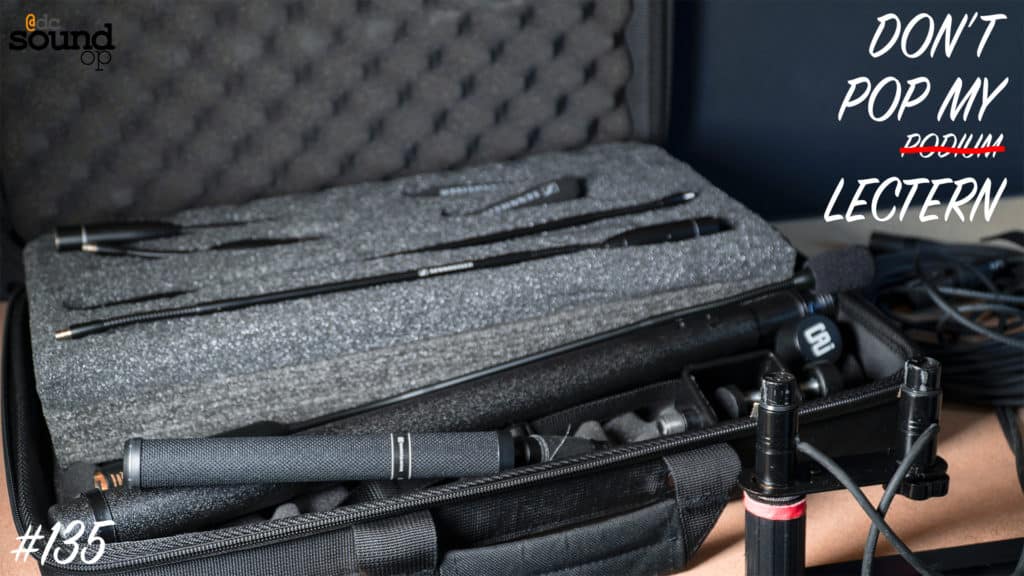As an Amazon Associate DcSoundOp earns from qualifying purchases.
don’t say podium – don’t say podium – don’t say podium
If you’ve spent any time in the world of corporate, special event or broadcast audio, you’ve probably fought a few lecterns along the way. From whispers to shouts, presenters hanging off the sides and the special ones who touch their lips right to the microphone and scream, it’s always a surprise. As many challenges as there are though, we have options and tools to deploy in response.
While no one solution is perfect for every lectern, this video focuses on one that deals with the worts offenders. If you’re typically using a standard lectern mic, something like a Shure MX418, this can be a technique that saves your signal chain when things get rough. Lectern mics take a lot of abuse. Often due to their location, right up in everyone’s face. They get smacked around by accident, clapped into, clapped on and whacked with all sorts of folders and folios. None of this sounds very good.
Once the speaking starts, presenters tend to focus their energy both good and bad on that poor little capsule. They’ll move it around, move around it, build up energy in their speech and go in for the kill, screaming their final points percussively and popping every P and B along the way. You even get those who seem to add syllables, extra little thuds and clicks onto words at random. What to do?
Click Here To Watch On Mobile
If the lectern mic is going to be the focus of everyone who steps up to speak, then I’d personally prefer to get my audio elsewhere. In this video we talk about hiding a small shotgun style microphone under your regular mic. We look at some simple mounting options and what types of results we can get by simply sourcing our audio from a mic a few inches away from where your talent is expecting it.
The traditional mic can still be used when appropriate, giving the benefit of the extra reach when needed. An advantage to this method is it can be deployed with almost any combination of microphones that you feel could be beneficial. We’re not concerned with matching the microphones exactly, as each will be used to combat different types of voices, we just need them both to be stable and sound good individually.
Let us know how you approach micing up a lectern. What mics do you prefer to use & why?
The microphones show in the video are the Countryman A3H18 and the Sennheiser ME36 mini-shotgun along with the complete IS Series Kit From Sennheiser and the Beyerdynamic RM30 Vertical Line Array Microphone. Following these links helps support the website and making more videos like this one. Thanks to everyone for the help!
Amazon and the Amazon logo are trademarks of Amazon.com, Inc, or its affiliates.


I’ve been using the Earthworks FMR600 recently with success, as well as the Countryman that you mentioned above. Both do a great job with presenters speaking off axis – maybe the Earthworks does a bit better during these conditions. They also work very well in environments with high SPL without having to use a whole lot of EQ to mitigate feedback. In my experience the Countryman excels here. I’ve also been using the AKG C47 (shotgun) over the last couple years and it has done a great job as long as presenters stay on axis. This is why I love your concept of using both types of capsules at the same time! Great suggestion.